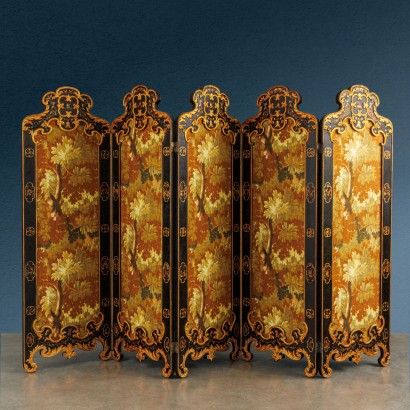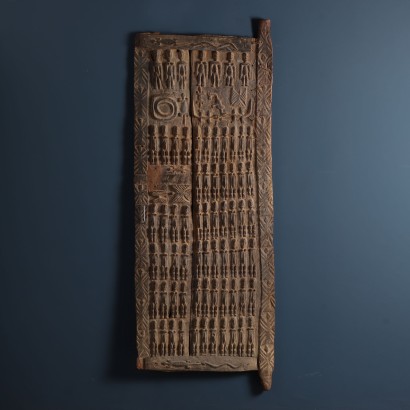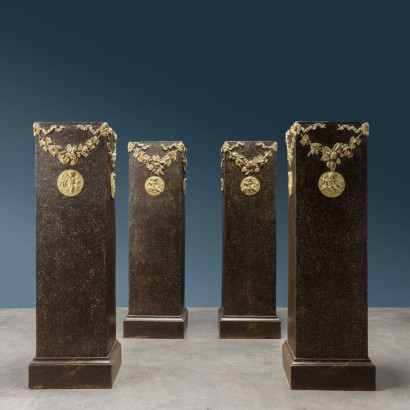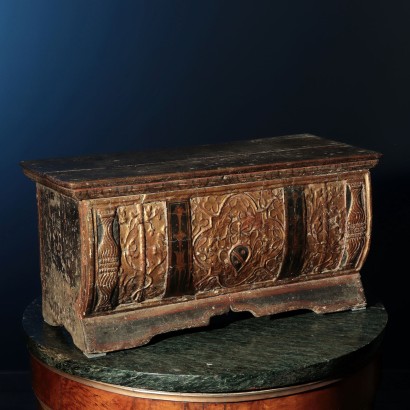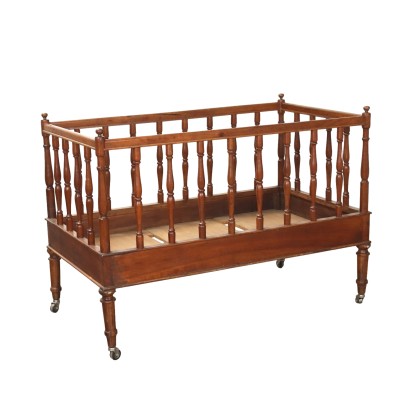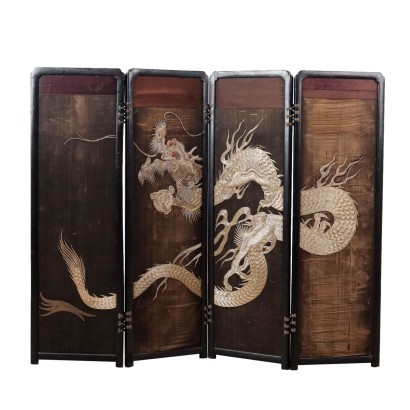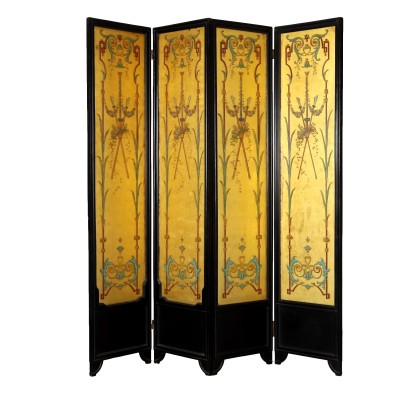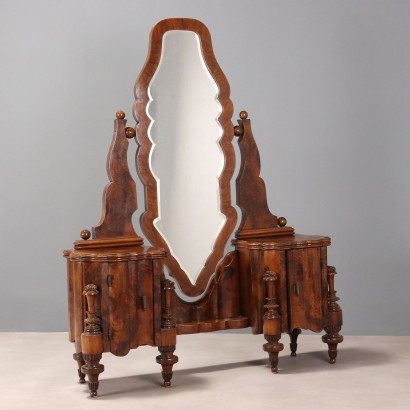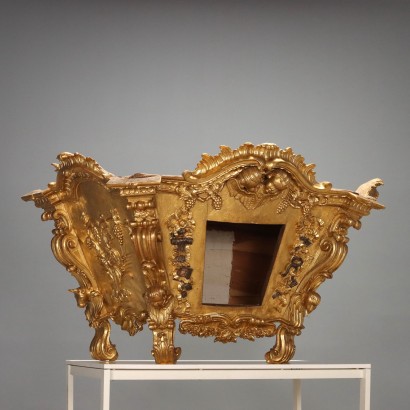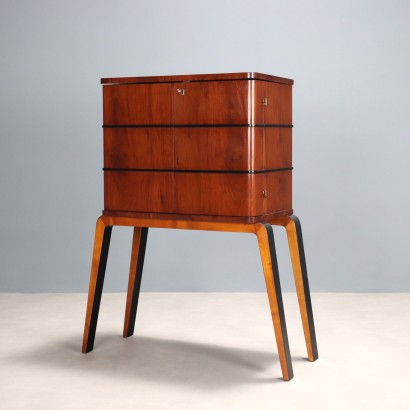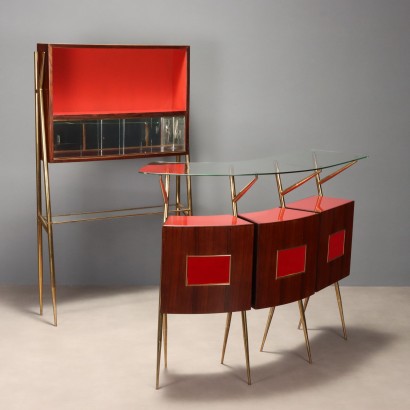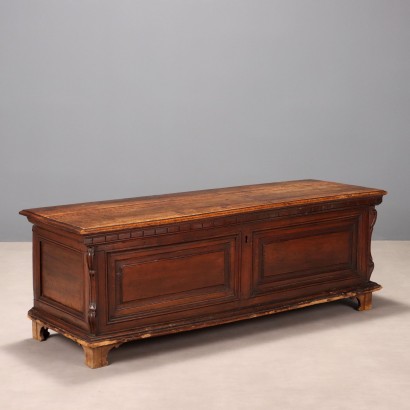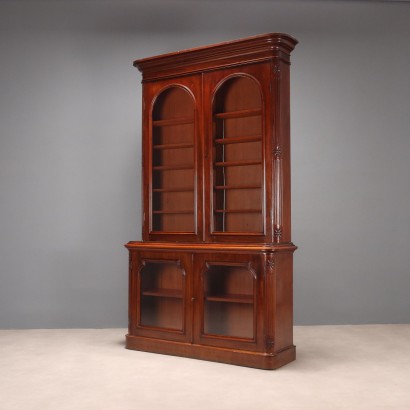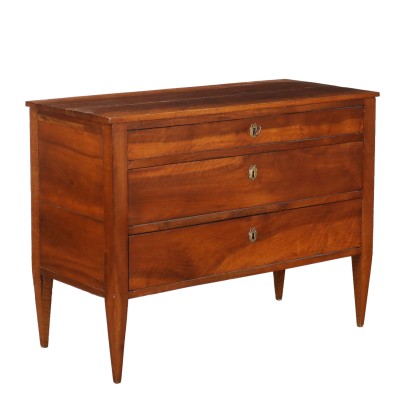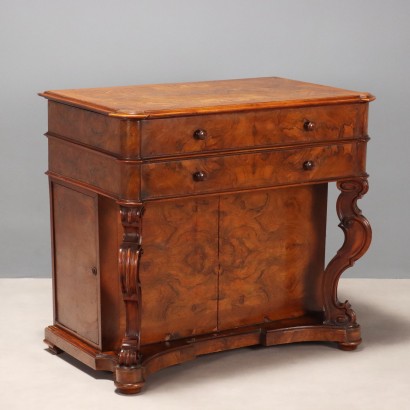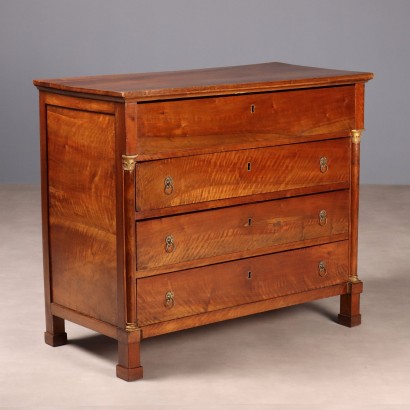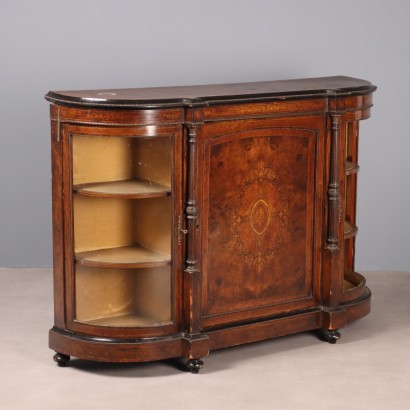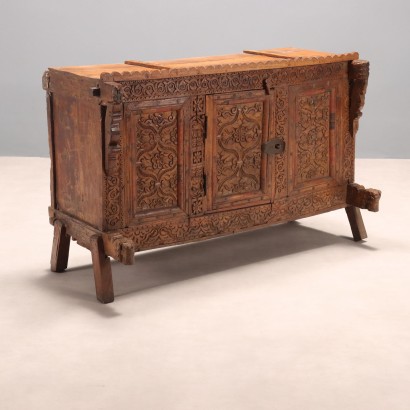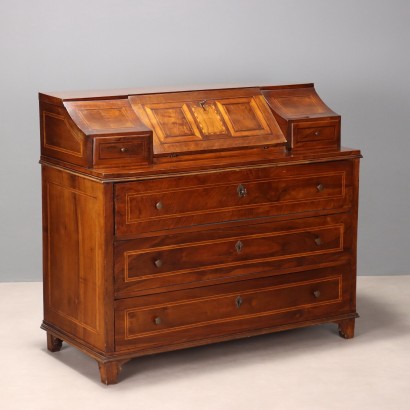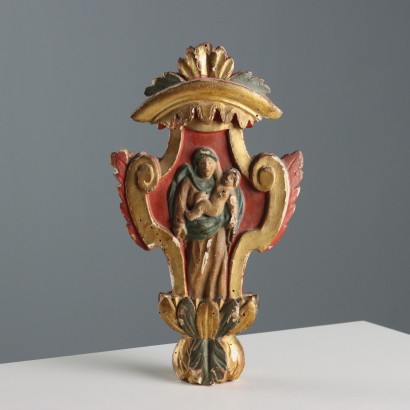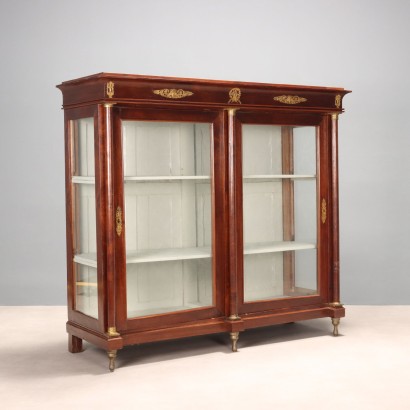Antique Screen Chinoiserie Lacquered Poplar Decorations XIX Century - Italy, Late XIX Century
Features
Italy, Late XIX Century
Style: Chinoiserie (1600-1800)
Age: 19th Century / 1801 - 1900
Origin: Italy
Description
Folding screen with five panels; in poplar entirely lacquered in black, it is decorated with painted motifs in the chinoiserie style: dragons, monkeys, birds, and reserves depicting scenes of Chinese life, juggling and combat. It has gilded leafy frames decorating the top and the lower part. Revisited by the designer Pietro Russo with Dedar fabric.
Product Condition:
Product in decent condition showing some signs of wear. We try to present the real state as fully as possible with photos. If some details are not clear from the photos, what is stated in the description applies.
Dimensions (cm):
Height: 207
Width: 68
Depth: 4
Maximum size (cm):
Width: 340
Additional Information
Notes historical bibliographic
Already widespread at the end of the previous century, chinoiserie had a real diffusion in the nineteenth century, appreciated and requested by the main European courts. The references to China and the Orient in general were capable of recalling an exoticism that was both aesthetically and culturally valuable. The calligraphy of the chinoiserie drawings, the heterogeneous bestiary (both real and fantastic) and the life scenes offered infinite decorative solutions for small objects and entire walls, creating interesting scenographic effects in the layout of the large rooms. Among the main promoters of chinoiserie was King George IV who, with the construction of the Royal Pavilion in Brighton as a pleasure palace on the sea, decided to set up some of the rooms in this style. In particular, the Banqueting Room, the Long Gallery and the Music Room present furnishings, chandeliers, objects such as porcelain, but also carpets and windows, in an oriental style. The walls of the room dedicated to music were decorated with scenes of Chinese life, in gold on a red background, created by Frederick Crace and Henry Lambelet and taken from The Customs of China by William Alexander (1805). In the Royal Pavilion, furniture, objects and hand-painted wallpapers exported from China coexist with others made in England, of an oriental taste mediated by Western gaze and fashions. There are numerous examples of chinoiserie even in Italian courts, a style loved in particular by the Savoy family who chose it to set up some of the rooms in Stupinigi and Racconigi. Another example can be found in the Piedmontese wallpaper room, at the Quirinale Palace in Rome.Style: Chinoiserie (1600-1800)
The term Chinoiserie (Chinoiserie) comes from French and refers to a period of European art, starting from the 17th century, in which there was a notable influence of Chinese art, also in the wake of a growing interest that Europe had developed for everything that was exotic, in general.This period was characterized by the use of fanciful images of an imaginary China, by asymmetry in formats and capricious contrasts of scale and by attempts to imitate Chinese porcelain as well as by the use of materials similar to lacquer.
Chinoiserie entered the European repertoire in the second half of the 17th century, when the work of Athanasius Kircher had a great influence on the study of Orientalism.
The popularity of chinoiserie reached its peak in the mid-18th century, when it was assimilated into the Rococo by the works of François Boucher.
They then declined when they appeared, in the eyes of Europeans, antithetical to neoclassicism.
They expressed themselves entirely in the decorative arts while their expression in architecture was realized entirely in the field of capricious "follies" (constructions made exclusively for decorative purposes, but whose form suggests another purpose).
On the other hand, the important transformations that Chinese models brought about in the 18th century on the style of early Georgian furniture and the naturalistic style of English garden landscapes were not considered chinoiserie.
Discover more about oriental influences in the history of the arts with our insights:
FineArt: Chinese mirror, last quarter of the 18th century
Oriental taste in late 19th century furnishings
The charm of the Orient in a Piedmontese manufacture
Presentation on FineArt of a Japanese armor of the 19th century
INSERT ADDITIONAL LINKS:
Oriental taste in Chinese and European furnishings
Oriental Art Collecting in the 18th Century
In-depth analysis of Oriental influences in European art
Age: 19th Century / 1801 - 1900
19th Century / 1801 - 1900Other customers have searched:
Approfondimenti
Per saperne di più:Paravento, Inghilterra fine XVIII-inizi XIX secolo
Sull'antiquariato in generale dai un'occhiata anche a:
Classic Monday: da un pezzo dei nostri magazzini alla storia dell'antiquariato
L'antiquariato dalla A alla Z: il Dizionario dell'Antiquariato
Il dizionario dell'antiquariato - Lastronatura
Il dizionario dell'antiquariato - Mascherone
Il dizionario dell'antiquariato - Natura morta
Il dizionario dell'antiquariato - Opificio
Il dizionario dell'antiquariato - Pastiglia
Il dizionario dell'antiquariato - Savonarola
Il dizionario dell'antiquariato - Rosone
Intaglio barocco con motivo a ricciolo
Se ti interessano i mobili d'antiquariato Scopri qui tutte le presentazioni dei prodotti d'antiquariato più belli, eleganti e preziosi su FineArt by Di Mano In Mano
Leggi di più
Sull'antiquariato in generale dai un'occhiata anche a:Antiquariato: una sezione per raccontare i mobili antichi che sono arrivati fino ai giorni nostri.
Classic Monday: da un pezzo dei nostri magazzini alla storia dell'antiquariato
L'antiquariato dalla A alla Z: il Dizionario dell'Antiquariato
Il dizionario dell'antiquariato - Lastronatura
Il dizionario dell'antiquariato - Mascherone
Il dizionario dell'antiquariato - Natura morta
Il dizionario dell'antiquariato - Opificio
Il dizionario dell'antiquariato - Pastiglia
Il dizionario dell'antiquariato - Savonarola
Il dizionario dell'antiquariato - Rosone
Intaglio barocco con motivo a ricciolo
Infine, dai un'occhiata alle nostre rubriche di divulgazione sulla storia delle arti decorative e d'arredo:
Epoche
Lavorazioni e tecniche
Mostre ed Eventi
Protagonisti
Product availability
The product can be seen at Cambiago
Immediate availability
Ready for delivery within 2 working days from ordering the product.

